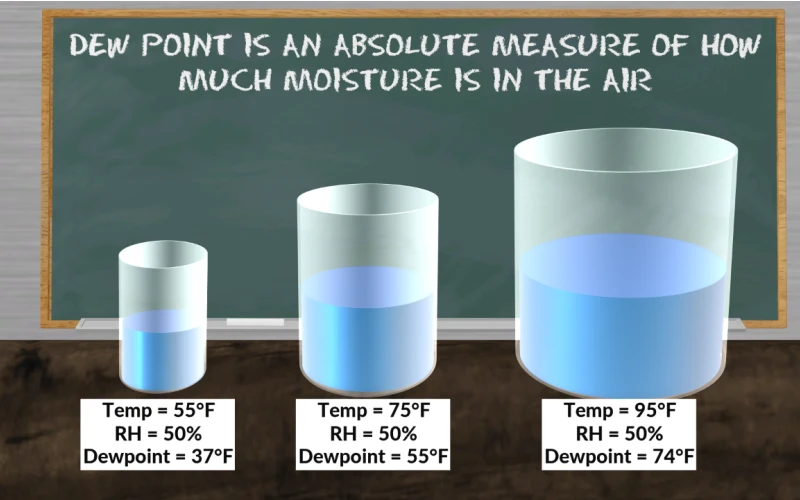
# How is Dew Point Calculated?
## Understanding Dew Point
Dew point is the temperature at which air becomes saturated with water vapor, leading to the formation of dew, frost, or fog. It’s a crucial measurement in meteorology, HVAC systems, and various industrial processes. Understanding how dew point is calculated helps in predicting weather conditions and maintaining optimal environmental conditions.
## The Science Behind Dew Point Calculation
Calculating dew point involves several atmospheric variables and mathematical formulas. The primary factors include:
– Air temperature
– Relative humidity
– Atmospheric pressure
The most accurate dew point calculations use complex equations that account for these variables. However, simplified versions exist for practical applications.
## Common Methods for Dew Point Calculation
### 1. Magnus Formula
One of the most widely used approximations is the Magnus formula:
Td = (b × α(T,RH)) / (a – α(T,RH))
Where:
– Td is dew point temperature
– T is air temperature
– RH is relative humidity
– a and b are constants (a ≈ 17.27, b ≈ 237.7°C)
– α(T,RH) = (a × T)/(b + T) + ln(RH)
### 2. Psychrometric Calculations
In HVAC and engineering applications, dew point is often determined using psychrometric charts that plot:
– Dry bulb temperature (actual air temperature)
– Wet bulb temperature
– Relative humidity lines
– Dew point temperature lines
### 3. Online Calculators and Instruments
Modern technology offers various tools for dew point calculation:
– Digital hygrometers with built-in dew point calculation
– Smartphone apps that use device sensors
– Online meteorological calculators
## Practical Applications of Dew Point
Understanding dew point calculations has numerous real-world applications:
– Weather forecasting and analysis
– Preventing condensation in buildings
– Industrial process control
– Agricultural planning
– Aviation safety considerations
## Factors Affecting Dew Point Accuracy
Several elements can influence the precision of dew point calculations:
– Measurement errors in temperature or humidity sensors
– Rapidly changing atmospheric conditions
– Altitude and atmospheric pressure variations
– Local microclimate effects
## Conclusion
Dew point calculation is a fundamental meteorological process that combines temperature and humidity measurements with mathematical formulas. Whether using the Magnus formula, psychrometric charts, or digital instruments, understanding how dew point is calculated helps professionals across various fields make informed decisions about weather, comfort, and industrial processes.
Keyword: how is dew point calculated